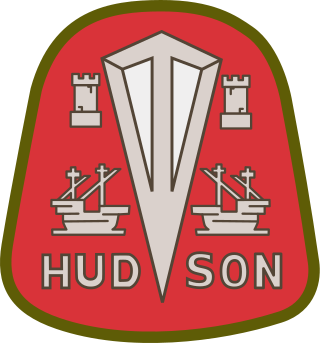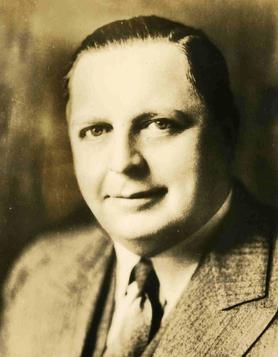Historical context
The first Packards were built by James Ward Packard and William Doud Packard and tested in the streets of their hometown, Warren, Ohio in 1899. The single cylinder, nine horsepower engine performed ably, for which soon after they named the machine the Model A.
The Packards were typical of the many tinkers, visionaries, and hard-headed businessmen who coalesced around the idea of the gasoline-powered automobile, a product of the social and economic changes occurring in the United States and Europe at the turn of the 20th century. By the 1920s, more than 180 American automobile companies had sprung into business in towns and cities across the Eastern and Mid-Western United States. Other companies were also started across Europe in England, Germany, and Italy especially. Cars were a popular commodity, and the public clamored for them. It was in this market that car companies grew very rapidly. Packard was soon marketed as a luxury car, and captured a large section of the elite section of the American market. By 1923, the Packard Motor Car Company was earning $7 million in profits a year.
Outcome
In the short term, Packard's low-end advertising and marketing strategy was a success. Middle-class car buyers were aware that they could buy Packards for less than other luxury car brands, such as Cadillac, Lincoln, or Chrysler. The ratio of sales between Packard's economy and luxury cars shot up from 3 to 1 in the mid 1930s to 12 to 1 in 1939. [5]
In the longer run, however, this blurring of Packard's image was disastrous for the company. Even though the public perceived the Packard as a quality car, people no longer associated it with luxury and premier craftsmanship. Packard simply became another car brand, near but not at the top of the industry. In addition, until 1950, Packard refused to adapt to an automotive standard that had been introduced at General Motors in the 1920s- yearly restyling of models. Because Packards tended to look the same the year after year, the public began to see the brand as outdated and less desirable. [6]

Lincoln Motor Company, or simply Lincoln, is the luxury vehicle division of American automobile manufacturer Ford Motor Company. Marketed among the top luxury vehicle brands in the United States, Lincoln is positioned closely against its General Motors counterpart Cadillac. However, beginning with the 2021 model year, they only offer SUV and crossover vehicles.

Packard was an American luxury automobile company located in Detroit, Michigan. The first Packard automobiles were produced in 1899, and the last Packards were built in South Bend, Indiana, in 1958.

A luxury car is a car that provides above-average to high-end levels of comfort, features, and equipment. Often, more expensive materials and surface finishes are used, and buyers expect better build quality. The usually higher pricing and more upscale appearance are often associated with the users' higher social status compared to low- and mid-market segment cars.

Nash Motors Company was an American automobile manufacturer based in Kenosha, Wisconsin from 1916 until 1937. From 1937 through 1954, Nash Motors was the automotive division of the Nash-Kelvinator Corporation. As sales of smaller firms declined after 1950 in the wake of the domestic Big Three automakers’ advantages in production, distribution, and revenue, Nash merged with Hudson Motors to form American Motors Corporation (AMC). Nash automobile production continued from 1954 through 1957 under AMC.

The Hudson Motor Car Company made Hudson and other branded automobiles in Detroit, Michigan, U.S., from 1909 until 1954. In 1954, Hudson merged with Nash-Kelvinator to form American Motors Corporation (AMC). The Hudson name was continued through the 1957 model year, after which it was discontinued.

Vanden Plas is the name of coachbuilders who produced bodies for specialist and up-market automobile manufacturers. Latterly the name became a top-end luxury model designation for cars from subsidiaries of British Leyland and the Rover Group, being last used in 2009 to denote the top-luxury version of the Jaguar XJ (X350).

The Peerless Motor Car Company was an American automobile manufacturer that produced the Peerless brand of motorcars in Cleveland, Ohio, from 1900 to 1931. One of the "Three Ps" – Packard, Peerless, and Pierce-Arrow – the company was known for building high-quality luxury automobiles. Peerless popularized a number of vehicle innovations that later became standard equipment, including drum brakes and the first enclosed-body production cars.

Durant Motors Inc. was established in 1921 by former General Motors CEO William "Billy" Durant following his termination by the GM board of directors and the New York bankers who financed GM.

The Packard Clipper is an automobile that was built by the Packard Motor Car Company for model years 1941–1942, 1946–1947 and 1953–1957. For 1956 only, Clipper was classified as a stand-alone marque. The Clipper was introduced in April 1941, as a mid-model year entry. It was available only as a four-door sedan. The Clipper name was re-introduced in 1953, for the automaker's lowest-priced lineup. By 1955, the Clipper models were seen as diluting Packard's marketing as a luxury automobile marque. It was named for a type of sailing ship, called a clipper.

The Packard Four Hundred was an automobile built by the Studebaker-Packard Corporation of South Bend, Indiana during model years 1955 and 1956. During its two years in production, the Four Hundred was built in Packard’s Detroit facilities, and considered part of Packard's senior model range.

The Packard Twelfth Series One-Twenty is an automobile produced by the Packard Motor Car Company of Detroit, Michigan, from 1935 to 1937 and from 1939 through the 1941 model years. The One-Twenty model designation was derived from the wheelbase, and it was replaced by the Packard 200.

George Walter Mason was an American industrialist. During his career Mason served as the Chairman and CEO of the Kelvinator Corporation (1928-1937), Chairman and CEO of the Nash-Kelvinator Corporation (1937-1954), and Chairman and CEO of American Motors Corporation (1954).

Roy Abernethy was an executive in the American automobile industry, serving as CEO of American Motors Corporation (AMC) from February 1962 to January 1967. Before his tenure at AMC, Abernethy had been with Packard Motors and Willys-Overland. Abernethy replaced George W. Romney, who resigned from AMC to become Governor of Michigan.

In the United States, the automotive industry began in the 1890s and, as a result of the size of the domestic market and the use of mass production, rapidly evolved into the largest in the world. The United States was the first country in the world to have a mass market for vehicle production and sales and is a pioneer of the automotive industry and mass market production process. During the 20th century, global competitors emerged, especially in the second half of the century primarily across European and Asian markets, such as Germany, France, Italy, Japan and South Korea. The U.S. is currently second among the largest manufacturers in the world by volume.

The Packard Ninth Series Light Eight Model 900 was an automobile model produced by the Packard Motor Car Company of Detroit, Michigan only during model year 1932. The Light Eight was planned as a new entry model, building off the 1928 Packard Six. It competed in the upper middle-class with makes like GM's Companion Brand LaSalle, Marquette and Chrysler's DeSoto, and the top-level products from Studebaker, Hudson, and Nash. The marketing objective was to add a new market segment for Packard during the depression.

The 1950s were pivotal for the American automobile industry. The post-World War II era brought a wide range of new technologies to the automobile consumer, and a host of problems for the independent automobile manufacturers. The industry was maturing in an era of rapid technological change; mass production and the benefits from economies of scale led to innovative designs and greater profits, but stiff competition between the automakers. By the end of the decade, the industry had reshaped itself into the Big Three, Studebaker, and AMC. The age of small independent automakers was nearly over, as most of them either consolidated or went out of business.

"You Press the Button, We Do the Rest" was an advertising slogan coined by George Eastman, the founder of Kodak, in 1888. Eastman believed in making photography available to the world, and making it possible for anyone who had the desire to take great pictures. Until then, taking photographs was a complicated process that could only be accomplished if the photographer could process and develop film. With his new slogan, Eastman and the Eastman Kodak Company became wildly successful and helped make photography popular.
Go Greyhound and Leave the Driving to Us is the advertising slogan used by Greyhound Lines, Inc. starting in 1956. The tag line appears on the bus line's advertising- television commercials, billboards, magazine ads, and radio spots periodically for the next four decades. The slogan implies that by riding a Greyhound bus, one avoids the hassles of driving a car. It makes car travel seem less convenient than bus travel. The message confronts Greyhound travelers who own cars and have a choice, and those who do not. Because of the success of this advertising slogan, Greyhound continually returned to it many times in the years after it was introduced.
The Kid in You is an advertising slogan developed for Kellogg's Frosted Mini-Wheats by the Leo Burnett Agency in the mid-1980s. The slogan was aimed at adults who were concerned with their perceived maturity but still wanted a sweet tasting children's cereal.

The Kessler Motor Company was a short-lived American manufacturer of aircraft engines and automobiles. The brand name for engines and automobiles was Kessler; also Kess-Line for some cars.


















